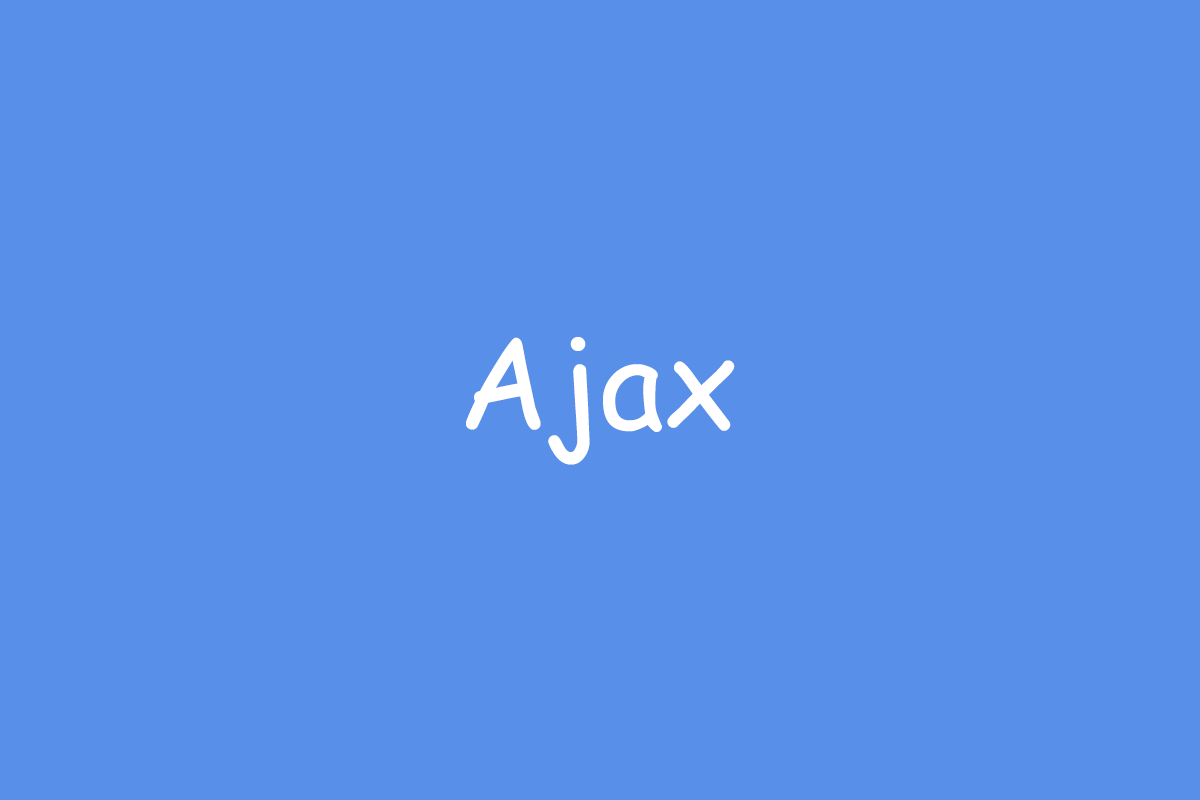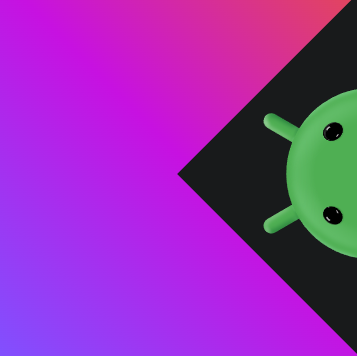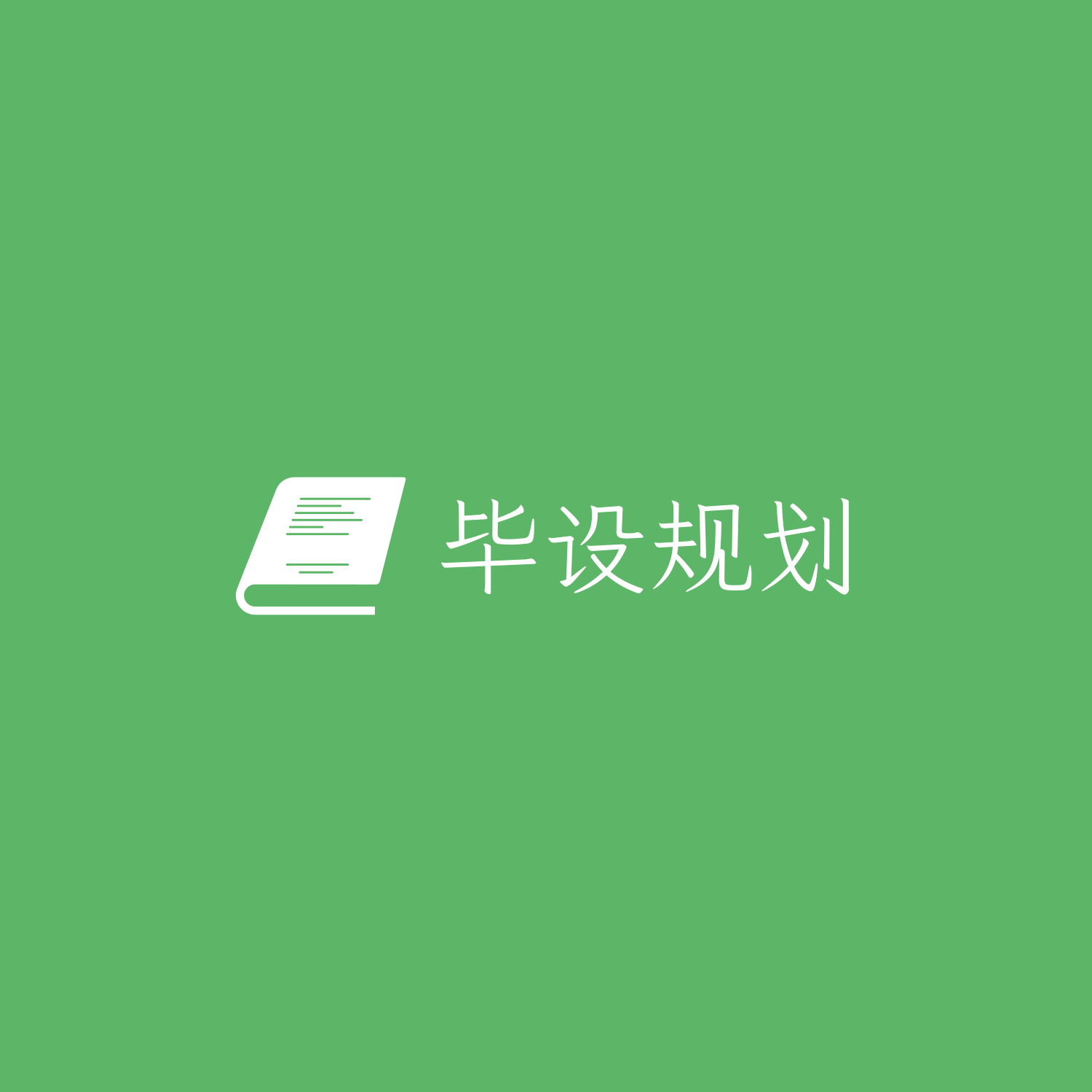前端AjaxAjax
定西Ajax
前言
学完SpringBoot,仔细了解了一下学习路线,还是要学vue啊,但是vue又用到了axios,而axios又用到了ajax
所以我来了
同样还是尚硅谷的视频,视频地址
Ajax基础
原生Ajax
Ajax简介
Ajax全程为Asynchronous JavaScript And XML 就是异步的JS和XML,通过Ajax可以在浏览器中向服务器发送异步请求,最大的优势,无刷新获取数据Ajax不是新的编程语言,而是一种将现有的标准组合在一起使用的新方式
前面这两节课都是介绍场景,然后还有xml简介的,这个再熟悉不过了
Ajax的优缺点
优点
- 可以无需刷新页面与服务器端进行通信
- 允许你根据用户事件来更新部分页面内容
缺点
- 没有浏览历史,不能回退
- 存在跨域问题(同源)
- SEO不友好
HTTP协议
这老师怎么突然从word跑到了vscode的markdown了哈哈哈哈艹
请求报文
重点是格式与参数
响应报文
Node.js
竟然用到这个东西了,之前装这个东西还是在写博客的时候
没想到这么巧
就直接拿来用了
Express
这个是没听过
就是用于代替服务端的,毕竟学前端的人不会去学后端,我感觉我可以自己来写一下后端哎,反正是接收请求啥的
先跟着老师写,然后看看能不能自己改成controller啥的
安装也很简单
管理员模式:
- npm init –yes
- npm i express
就安装好了
express的使用
1
2
3
4
5
6
7
8
9
10
11
12
13
14
15
16
17
18
19
|
const { request, response } = require('express');
const express = require('express');
const app = express();
app.get('/',(request,response)=>{
response.send("Hello Express");
});
app.listen(8000, ()=>{
console.log("服务已经启动,8000 端口监听中");
});
|
简单案例
GET
先是服务端
跟上面的代码区别不大,主要区别就在于设置了一个响应头,用于允许跨域,以及设置get请求的请求路径为/server
1
2
3
4
5
6
7
8
9
10
11
12
13
14
15
16
17
18
19
20
21
22
23
|
const { request, response } = require('express');
const express = require('express');
const app = express();
app.get('/server',(request,response)=>{
response.setHeader('Access-Control-Allow-Origin','*')
response.send('HELLO AJAX')
});
app.listen(8000, ()=>{
console.log("服务已经启动,8000 端口监听中");
});
|
然后是页面实现
还是基础的js语法,大概想起了一些,什么document
1
2
3
4
5
6
7
8
9
10
11
12
13
14
15
16
17
18
19
20
21
22
23
24
25
26
27
28
29
30
31
32
33
34
35
36
37
38
39
40
41
42
43
44
45
46
47
48
49
50
51
52
53
54
55
56
57
58
59
60
61
62
| <!DOCTYPE html>
<html lang="en">
<head>
<meta charset="UTF-8">
<meta http-equiv="X-UA-Compatible" content="IE=edge">
<meta name="viewport" content="width=device-width, initial-scale=1.0">
<title>Ajax GET 请求</title>
<style>
#result {
width: 200px;
height: 100px;
border: solid 1px #90b
}
</style>
</head>
<body>
<button>点击发送请求</button>
<div id="result"></div>
<script>
const btn = document.getElementsByTagName('button')[0];
const result = document.getElementById('result');
btn.onclick = function () {
const xhr = new XMLHttpRequest();
xhr.open('GET', 'http://localhost:8000/server');
xhr.send();
xhr.onreadystatechange = function () {
if (xhr.readyState === 4) {
if (xhr.status >= 200 && xhr.status < 300) {
result.innerHTML = xhr.responseText;
}else{
}
}
};
}
</script>
</body>
</html>
|
所以那个server.js,其实就是默认了一个服务器
直接用tomcat应该也一样,用SpringBoot创建一个项目,写一个controller接收server请求就行了
没问题啊没问题
看代码
1
2
3
4
5
6
7
8
9
10
11
12
13
14
15
16
| package com.zzmr.boot.controller;
import org.springframework.web.bind.annotation.CrossOrigin;
import org.springframework.web.bind.annotation.GetMapping;
import org.springframework.web.bind.annotation.RestController;
@RestController
@CrossOrigin
public class AjaxController {
@GetMapping("/server")
public String replaceServer(){
return "Hello Ajax";
}
}
|
发送参数
直接在url后面拼接就行了
在SpringBoot允许跨域,其中的一个注解就是@CrossOrigin(刚百度的)
加上这个注解,就和写的server.js效果一样了
POST
案例简介:当鼠标放到div上时,向服务端发送请求,将响应体在div中展示
1
2
3
4
5
6
7
8
9
10
11
12
13
14
15
16
17
18
19
20
21
22
23
24
25
26
27
28
29
30
31
32
33
34
35
36
37
38
39
40
41
42
43
| <!DOCTYPE html>
<html lang="en">
<head>
<meta charset="UTF-8">
<meta http-equiv="X-UA-Compatible" content="IE=edge">
<meta name="viewport" content="width=device-width, initial-scale=1.0">
<title>Ajax POST 请求</title>
<style>
#result{
width: 200px;
height: 100px;
border:solid 1px #904;
}
</style>
</head>
<body>
<div id="result"></div>
<script>
const result = document.getElementById("result");
result.addEventListener("mouseover", function() {
const xhr = new XMLHttpRequest();
xhr.open("POST", 'http://localhost:8000/server')
xhr.send('a:100&b:200&c=300');
xhr.onreadystatechange = function() {
if (xhr.readyState == 4) {
if(xhr.status >= 200 && xhr.status <300){
result.innerHTML = xhr.response;
}
}
}
});
</script>
</body>
</html>
|
也没什么难的
Ajax设置请求头
就是在open()后面再加一个方法
1
2
3
4
5
|
xhr.setRequestHeader("Content-Type", "application/x-www-form-urlencoded");
xhr.setRequestHeader('name','zzmr');
|
服务端响应Json格式数据
案例简介:在这个窗口下,按下任何一个按键,就会像服务端发送请求,服务端返回结果,把结果呈现在div中
1
2
3
4
5
6
7
8
9
10
11
12
13
14
15
16
17
18
19
20
21
22
23
24
25
26
27
28
29
30
31
32
33
34
35
36
37
38
39
40
41
42
43
44
45
46
47
48
49
50
51
52
53
| <!DOCTYPE html>
<html lang="en">
<head>
<meta charset="UTF-8">
<meta http-equiv="X-UA-Compatible" content="IE=edge">
<meta name="viewport" content="width=device-width, initial-scale=1.0">
<title>Ajax Json</title>
<style>
#result {
width: 200px;
height: 100px;
border: solid 1px rgb(46, 203, 72);
}
</style>
</head>
<body>
<div id="result"></div>
<script>
const result = document.getElementById("result");
window.onkeydown = function () {
const xhr = new XMLHttpRequest();
xhr.responseType = 'json';
xhr.open('GET', 'http://localhost:8000/json-server');
xhr.send();
xhr.onreadystatechange = function () {
if (xhr.readyState === 4) {
if (xhr.status >= 200 && xhr.status < 300) {
result.innerHTML = xhr.response.name;
}
}
};
}
</script>
</body>
</html>
|
这里也很简单,主要就是注意前端接受后端发来的json格式的数据,如何转换的问题
有两种方式:
手动转换-调用JSON.parse()
1
2
3
|
let data = JSON.parse(xhr.response);
result.innerHTML = data.name;
|
自动转换
在新建xhr的时候设置
1
2
|
xhr.responseType = 'json';
|
这样,就可以直接用了
1
2
|
result.innerHTML = xhr.response.name;
|
这里我还是用的SpringBoot自己实现的服务端
1
2
3
4
5
6
7
8
| @GetMapping("/json-server")
public Map replaceJsonServer() {
Map<String, String> map = new HashMap<>();
map.put("name", "zzmr");
return map;
}
|
nodemon
自动重启服务
安装命令:
npm install -g nodemon
开启服务的命令:
npx nodemon server.js
不加npx就报错..
但是我感觉我用不到啊
解决IE缓存问题
案例就不写了,知道是用什么手法解决的就行:
时间戳解决
请求路径:’http://localhost:8000/ie?t'+Date.now()
各类问题
超时与网路异常
1
2
3
4
5
6
7
8
9
10
11
12
13
14
15
16
17
18
19
20
21
22
23
24
25
26
27
28
29
| <script>
const button = document.getElementsByTagName('button')[0];
const result = document.querySelector('#result');
button.addEventListener('click', function () {
const xhr = new XMLHttpRequest();
xhr.timeout = 2000;
xhr.ontimeout = function(){
alert("网络异常,请稍后重试");
}
xhr.onerror = function(){
alert("网络似乎除了一些问题");
}
xhr.open('GET', "http://localhost:8000/timeout");
xhr.send();
xhr.onreadystatechange = function () {
if (xhr.readyState === 4) {
if (xhr.status >= 200 && xhr.status < 300) {
result.innerHTML = xhr.response;
}
}
}
})
</script>
|
也没啥,就是两个方法:ontimeout和onerror
后端的话,用了sleep
1
2
3
4
5
6
7
|
@GetMapping("/timeout")
public String replaceTimeServer() throws InterruptedException {
Thread.sleep(3000);
return "延时响应";
}
|
取消请求
1
2
3
4
5
6
7
8
9
10
11
12
13
14
15
16
| <script>
const btn1 = document.getElementsByTagName('button')[0];
const btn2 = document.getElementsByTagName('button')[1];
let xhr = null;
btn1.onclick = function() {
xhr = new XMLHttpRequest();
xhr.open('GET','http://localhost:8000/timeout');
xhr.send();
}
btn2.onclick = function() {
xhr.abort();
}
</script>
|
取消就是一个abort()方法,需要注意的是要把变量xhr声明在两个onclick方法外面(但是我实测在里面也一样能访问到)
请求重复发送
同一个请求,连续发送,会造成服务器压力过大的情况
原理就是,发送一个请求,先看一下之前是否有相同请求(该暂未响应),有的话,就取消上次的请求,发送新的请求
1
2
3
4
5
6
7
8
9
10
11
12
13
14
15
16
17
18
19
20
21
22
23
24
25
26
27
28
29
30
31
32
33
| <script>
const btn1 = document.getElementsByTagName('button')[0];
const btn2 = document.getElementsByTagName('button')[1];
let xhr = null;
let isSending = false;
btn1.onclick = function () {
if (isSending) {
xhr.abort();
}
xhr = new XMLHttpRequest();
isSending = true;
xhr.open('GET', 'http://localhost:8000/timeout');
xhr.send();
xhr.onreadystatechange = function () {
if (xhr.readyState === 4) {
isSending = false;
}
}
}
btn2.onclick = function () {
xhr.abort();
}
</script>
|
就是使用了一个标识变量,但是说实话我这我有一点迷
JQuery中的Ajax
GET请求和POST请求
1
2
3
4
5
6
7
8
9
10
11
12
13
| <script>
$('button').eq(0).click(function () {
$.get('http://localhost:8000/jquery-server', { a: 100, b: 200 }, function (data) {
console.log(data);
});
})
$('button').eq(1).click(function () {
$.post('http://localhost:8000/jquery-server', { a: 100, b: 200 }, function (data) {
console.log(data);
}, 'json');
})
</script>
|
写了两个控制器方法
1
2
3
4
5
6
7
8
9
10
11
| @GetMapping("/jquery-server")
public String JQueryGETServer(){
return "Hello JQuery Ajax -- GET";
}
@PostMapping("/jquery-server")
public Map JQueryPOSTServer(){
Map<String, String> map = new HashMap<>();
map.put("name", "zzmr");
return map;
}
|
通用方法
1
2
3
4
5
6
7
8
9
10
11
12
13
14
15
16
17
18
19
20
21
22
23
24
25
26
| $('button').eq(2).click(function () {
$.ajax({
url: 'http://localhost:8000/jquery-server',
data: { a: 100, b: 200 },
type: 'POST',
dataType: 'json',
success: function (data) {
console.log(data);
},
timeout: 2000,
error: function () {
console.log('出错了!!!!');
},
headers: {
c:300,
d:400
}
});
});
|
axios
最热门的ajax工具库
项目地址
可以在目录里安装axios,也可以在页面引用:
1
| <script src="https://gcore.jsdelivr.net/npm/axios@1.1.2/dist/axios.min.js"></script>
|
使用cdn加速:
1
| <script crossorigin="anonymous" src="https://cdn.bootcdn.net/ajax/libs/axios/1.2.2/axios.js"></script>
|
1
2
3
4
5
6
7
8
9
10
11
12
13
14
15
16
17
18
19
20
21
22
23
24
25
26
27
28
29
30
31
32
33
34
35
36
37
38
39
40
41
42
43
44
45
46
47
48
49
50
51
52
53
54
55
56
57
58
59
60
61
62
63
64
65
66
67
68
69
70
71
72
73
74
| <script>
const btns = document.querySelectorAll('button');
btns[0].onclick = function () {
axios.get('http://localhost:8000/axios-server', {
params: {
id: 100,
vip: 7
},
headers: {
name: 'zzmr',
age: 20
},
}).then(value => {
console.log(value);
});
}
btns[1].onclick = function () {
axios.post('http://localhost:8000/axios-server', {
username: 'admin',
password: 'admin'
}, {
params: {
id: 200,
vip: 9
},
headers: {
height: 180,
weight: 180,
}
});
}
btns[2].onclick = function () {
axios({
method : 'POST',
url: 'http://localhost:8000/axios-server',
params: {
vip:10,
level:30
},
headers: {
a:100,
b:200
},
data: {
username: 'admin',
package: '010203'
}
}).then(response=>{
console.log(response);
console.log(response.status);
console.log(response.statusText);
console.log(response.headers);
console.log(response.data);
})
}
</script>
|
最下面的这种是最常用的
使用fetch函数发送Ajax请求
这个放着吧,不想看了
同源策略
一种安全策略
同源:协议,域名,端口号必须完全相同
违背同源策略就是跨域
看看吧,剩下的都是知识点,前面的都是讲怎么用的
<script>标签默认可以实现跨域
jsonp
Jquery实现Jsonp
还有CORS
就仔细看看CORS吧
CORS:跨域资源共享,CORS是官方的跨域解决方案,它的特点是不需要在客户端做任何特殊的操作,完全在服务器中进行处理,支持get和post请求(还有其他的),跨域资源共享标准新增了一组HTTP首字段,允许服务器声明哪些源站通过浏览器有权限访问哪些资源
就是加上@CrossOrigin注解其实是
结束了
2022年12月31日 18点34分








